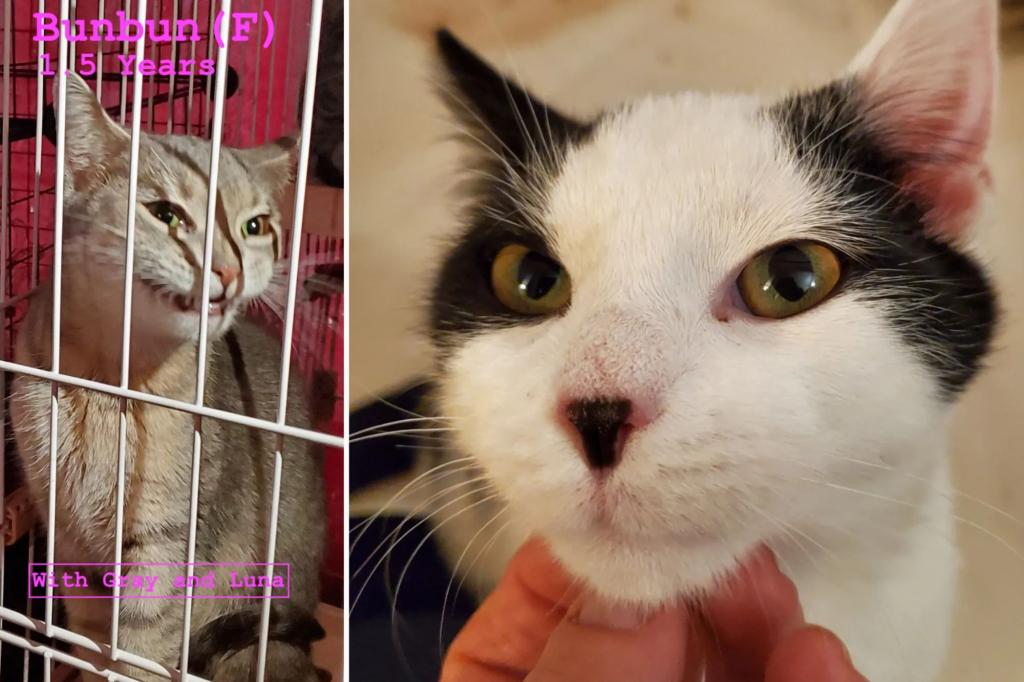A crisis unfolds in the Bronx, where a woman’s hoarding of over a dozen cats has reached a breaking point, with her husband threatening to evict the felines. This precarious situation has galvanized a network of animal rescuers, racing against time to find homes for these vulnerable creatures before a looming Thursday deadline. The initial discovery came via a concerned neighbor who alerted Animal Project NYC, a non-profit organization, setting in motion a desperate effort to avert a tragic outcome for the cats. Independent rescuer Tiff Winton, now spearheading the mission, paints a grim picture of the perils the cats face if abandoned: life on the streets is a brutal struggle for survival, fraught with dangers like starvation, disease, and territorial battles. Compounding the urgency is the fact that none of the cats are spayed or neutered, raising the specter of uncontrolled breeding and further exacerbating the existing overpopulation of stray animals.
Animal Project NYC has stepped up, offering crucial services free of charge, including vaccinations, health screenings, and spaying/neutering – essential steps in preparing the cats for adoption. The organization is also arranging adoption events to showcase the cats to potential forever homes. While the husband initially threatened immediate eviction, the intervention of rescuers bought the cats a precious week’s reprieve. This temporary stay of execution is a small victory in a larger battle, with the clock ticking relentlessly. The situation highlights the insidious nature of animal hoarding, often veiled behind closed doors, and the urgent need for community intervention. It also underscores the dedication of rescuers who tirelessly dedicate their time and resources to save animals from perilous circumstances.
Another rescue organization, Inky Blue, affiliated with the Mayor’s Alliance for NYC’s Animals, has offered a placement for at least one cat, and a handful of foster homes have emerged through the rescuers’ network. However, more than half of the cats remain without placement, and traditional shelters are considered a last resort. Winton explains the rationale behind this reluctance, citing overcrowding and the increased risk of illness in shelter environments, despite the commendable efforts of shelter staff. These dedicated individuals work tirelessly to provide care, but the sheer volume of animals and the inherent challenges of a confined setting pose significant threats to the cats’ well-being. The precarious balance between shelter as a refuge and shelter as a potential source of danger underscores the complexity of the situation.
Prior to her recent illness, the woman had reportedly confined as many as ten cats – ranging from young kittens to seniors – in single cages. Following the ASPCA’s removal of eleven other cats from the home, volunteers discovered an additional sixteen felines remaining. While most of the cats appear physically healthy and show no outward signs of abuse, the underlying reasons for their hoarding remain unclear. However, Winton points to illegal pet breeding and sales as a rampant problem in the Bronx, contributing to the pervasive issue of abandoned animals. This illicit trade often operates under the radar, exacerbating the strain on rescue organizations and shelters already grappling with overwhelming numbers. The sheer volume of discarded cats and dogs speaks to a systemic issue demanding attention and solutions.
This particular rescue mission has fostered an unusual spirit of collaboration among animal rescuers, a field often marked by competition for limited resources. Winton emphasizes the unique nature of this joint effort, where individuals from diverse locations across the city, from Rego Park and Hell’s Kitchen to Chelsea and Queens, have united in a common cause. This collaborative spirit speaks to the gravity of the situation and the shared commitment to ensuring the cats’ safety and well-being. The limited time frame further intensifies the pressure on these volunteers, adding to the urgency of their mission. Their combined efforts represent a beacon of hope for these vulnerable felines, demonstrating the power of collective action in the face of adversity.
The ongoing search for foster families and adoptive homes is a testament to the dedication of these rescue workers, who tirelessly strive to provide these cats with a second chance at a better life. They understand that a loving home environment is paramount to the cats’ physical and emotional recovery, offering a haven from the trauma of hoarding and the potential dangers of the streets. Every placement represents a victory, a step closer to ensuring the cats’ safety and well-being. Their tireless efforts highlight the crucial role of community involvement in animal welfare, demonstrating that even small acts of kindness can make a profound difference in the lives of these vulnerable creatures. The urgency of their mission underscores the need for continued support and the hope that these cats will find the loving homes they deserve.










